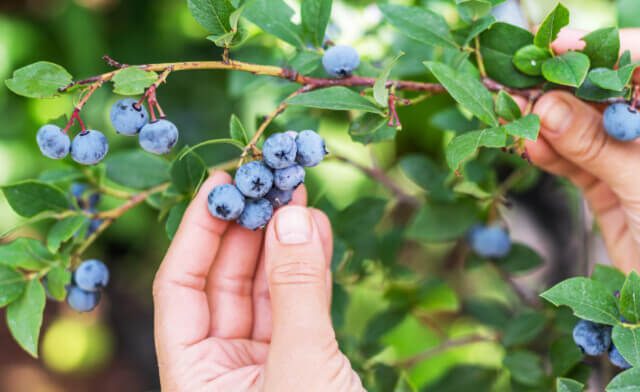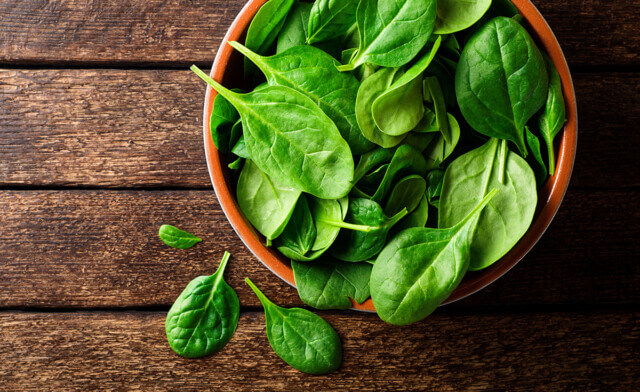Everything to Know About Weight Loss Dog Food
Overweight and obese dogs are becoming incredibly common, but the good news is there are many steps you can take to help your dog lose a few extra pounds if needed. Changing up your dog’s food is an easy thing to try if you’re wanting to help your dog lose weight, so switching to a weight loss dog food is a great first step to getting your dog on a healthier path.
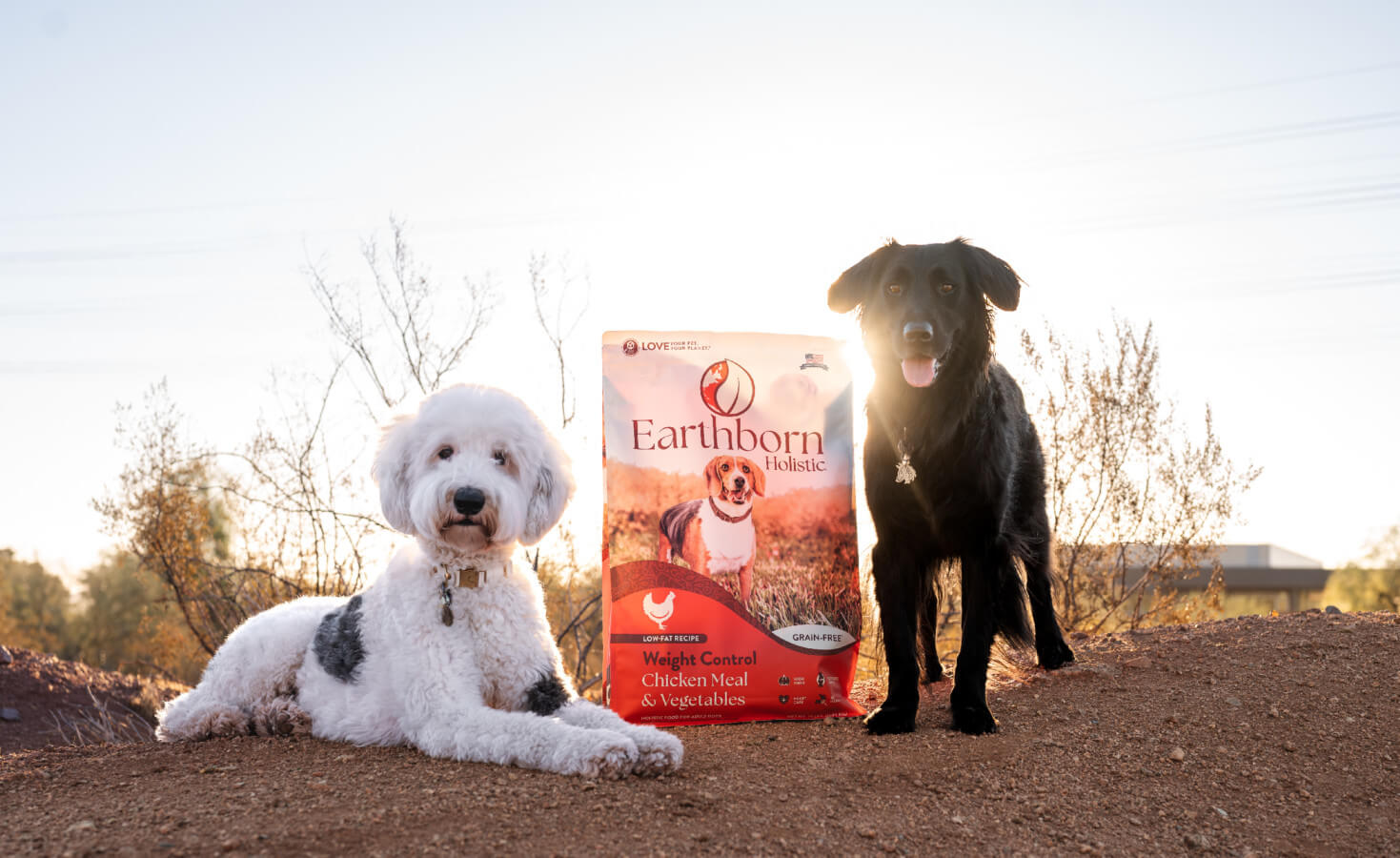
Why Choose Weight Loss Dog Food
The main reason people choose a weight loss dog food is because they’ve realized that they have an overweight dog. But do you know how to tell if your dog is overweight? While determining if your dog needs to lose a few pounds is a conversation you should have with your vet (and another reason why those yearly checkups are so important), there are ways to determine on your own if weight gain and a potential weight reduction or weight loss plan is an issue you should begin to address with your veterinarian.
Using a Body Condition Score chart is a great starting point to see if your pup is close to the size they should be at. A Body Condition Score (BCS) is a rating that is typically on a scale of 1-5, with 1 being too thin, 5 being obese, and 3 being the idea score that your dog should be at. Some versions also use a rating of 1-9. To measure your dog’s BCS, you can use the chart below. PetMD recommends the following method to help you decide which area on the chart your dog lands:
“To begin, gently press your hands over the rib cage. Individual ribs should be evident without having to press hard, but they should not be readily felt. There should be no overlying fat, and they should not be seen readily.
“There should be a nice, seemingly proportionate “abdominal tuck” or “hourglass” when palpating your dog’s waist from the side or along his back. Physically palpating is particularly important in dogs with excess fur. Dogs that are too thin will have bony prominences, particularly over the hip bones, shoulder blades and ribs. Dogs who are obese will have excessive soft or fatty areas that are evident, and it will be more difficult or impossible to feel their ribs or hip bones.”
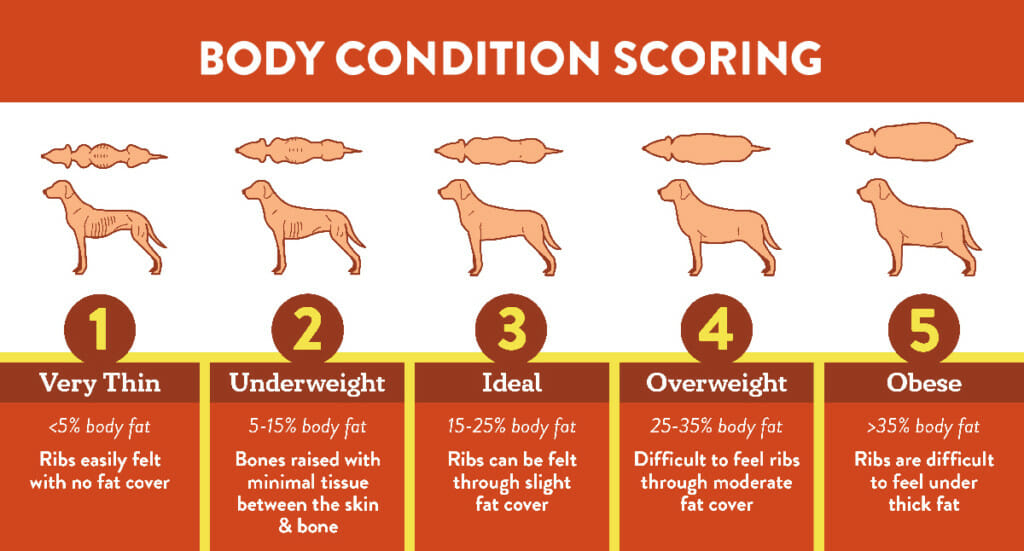
As mentioned earlier, weight gain in dogs is extremely common and if your dog falls on the higher end of the BCS rating, it may be time to consider switching to a weight loss dog food.
Another reason to consider weight control dog food that people don’t usually think of is aging. Our Weight Control recipe is a highly-recommended recipe for senior dogs because, similar to humans, dogs’ metabolisms slow as they age. If you’re feeding a recipe like Primitive Natural to your highly-active adult dog or puppy and continue feeding this same high-calorie recipe to your dog as they age, become less active, and their metabolism slows down, your dog will be more susceptible to weight gain as they age.
As your dog ages, joint health also becomes more important. Joint health goes hand-in-hand with weight control for seniors because the last thing you want is for your dog to have extra stress on their already aging joints. For this reason, it’s important to not only find a low-calorie dog food for your senior but also a recipe that’s fortified with glucosamine and chondroitin sulfate. These supplements are great for maintaining joint health and are especially important for senior dogs who become more prone to dog health issues like arthritis to help support their quality of life.
Long Term Health Risks in Overweight Dogs
Dogs who are overweight are at an increased risk for a variety of health issues. Different types of cancers including urinary cancer and mammary cancer are a few of concerns of being overweight. These can both be avoided normally with human control of your dog’s diet. Pancreatitis in dogs is another health risk in overweight dogs. According to the American Kennel Club (AKC), dog symptoms of pancreatitis include hunched back, vomiting, pain in abdomen, diarrhea, loss of appetite, dehydration, weakness, and fever. If your dog is showing any of these symptoms, be sure to visit your vet. To avoid pancreatitis, feed smaller, more frequent meals instead of one large meal. No table scraps allowed as well! By being in control of your dog’s diet, you can help them live longer.
Weight Management Dog Food vs Regular
The main difference between weight control dog food and regular dog food is the calorie and fat content. A low-fat diet and low-calorie dog food is essential when trying to help your dog lose weight and reducing fat.
When looking for the best weight management dog food, you also want to look for a recipe that has a lean protein like turkey. Other proteins are often high in saturated fats and turkey specifically is a low-calorie protein, making it great for weight loss and weight reduction. In addition to the main protein, superfoods that are high in fiber are also great to look for.
While grain free weight control dog foods do exist, high-quality whole grain formulas tend to work better for weight loss since whole grains like brown rice and oatmeal are complex carbohydrates that will leave your dog fuller for longer instead of filler foods that will have your dog hungry again not long after eating.
Another thing to look for in weight loss dog food is L-carnitine, an amino acid. It will be listed in the guaranteed analysis of your dog’s food if it’s included, but according to PetMD, it’s purpose is to move more fatty acids into cells to be burned for energy. Another amino acid to look for is taurine, which helps support your dog’s heart health–something that’s even more important to keep an eye on if your dog is overweight.
Counting Calories in Dog Food
Calories in dog food are measured in kilocalories, or “kcal.” That being said, if you take anything from this article let it be this:
1 kilocalorie in dog food is not 1,000 calories.
According to the American Association of Feed Control Officials (AAFCO), “Though it sounds complicated, the requirement that all pet food labels express calorie statements in terms of kilocalories per kilogram of product as fed makes it easier to compare similar products. A kilocalorie is the same as a calorie (aka a big calorie or food calorie). It means the same thing as a calorie on a human food label, but is a more scientifically accurate term.”
Typically on a dog food label, you’ll find something like “315 kcal/cup.” So, this does not mean 315,000 calories since the two units of measurement are not interchangeable (also, that’s a lot of calories!). Instead, it just means there’s 315 kilocalories, 315 food calories, or 315 dog calories, per cup.
Switching to Weight Loss Dog Food
If you’ve decided that weight management dog food is right for your pup, the next step is to actually switch. Even though you may be tempted to switch your dog’s food cold turkey, changing dog food too quickly can lead to many side effects, including giving your dog upset stomach after switching food.
How long does it take for a dog to adjust to a new food? About seven days! For this reason, you’ll want to learn the proper way for how to transition dog food, also known as the seven day switch. Here is the recommended breakdown of the seven day switch:
- Days 1 & 2 – 25% new food, 75% old food
- Days 3 & 4 – 50% new food, 50% old food
- Days 5 & 6 – 75% new food, 25% old food
- Day 7 – 100% new food
This allows your pup to grow familiar with their new food and it helps alleviate issues that come from switching dog food and side effects like stomach upset.
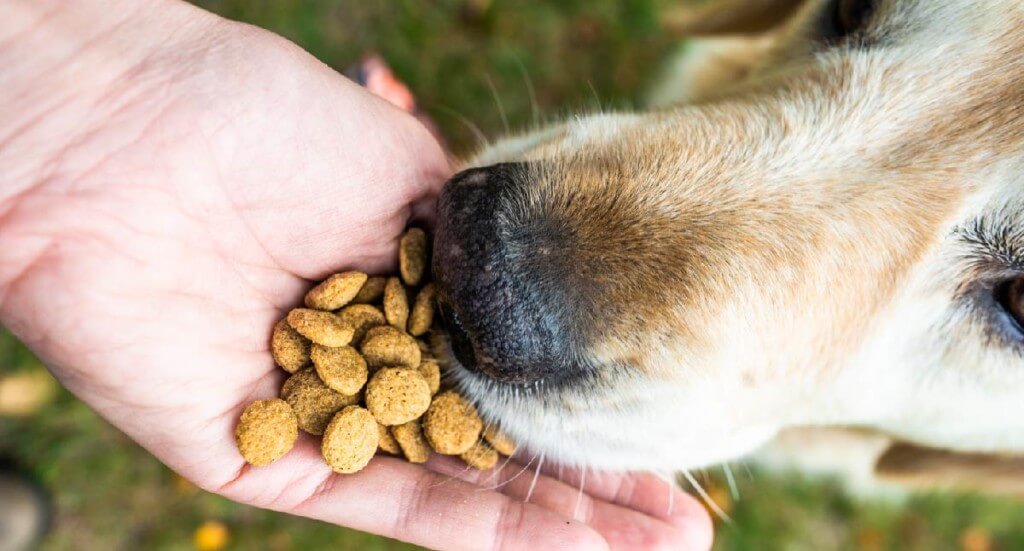
You’ll also want to make sure that you look at the dog food feeding chart that’s on the back of the new food–not all recipes require feeding the same amount of food, so you’ll want to make sure you’re feeding the right amount of food by the end of the seven days as well and not over- or underfeeding. It’s normal to feed the same dog ½ cup a day for one recipe and ⅓ for another because of calorie differences, which is why you’ll also need to take this into consideration when starting your switch to a new food.
Nutrition Requirements
When choosing a new food, it’s always important to take note of the nutrition requirements your dog needs, especially in instances of weight management. In all cases, you should look at the label on your pet’s food and understand what it all means so you can more confidently choose a high quality food for your dog.
The ingredients list is first. When choosing a weight management food, you’ll want to make sure the food is using a lean protein as the main protein source. Lean proteins like turkey are lower in calories, which means they will help even more with weight loss. While you want a food that’s high in protein, too much can also add calories so looking for a reasonable amount is key here. Superfoods that are high in fiber like pumpkin are also great to look for.
Another thing to look for on the ingredients list is complex carbohydrates. Carbohydrates are broken into two categories: simple carbohydrates and complex carbohydrates. Complex carbohydrates digest more slowly, meaning they will keep your dog fuller for longer which is ideal for weight loss. Fiber is a type of complex carbohydrate and main sources include ingredients like whole grains (brown rice, oatmeal, etc.), fruits, and vegetables. Making sure your weight loss dog food has some of these ingredients in the list will make it more effective for weight management.
The next thing to look at is the guaranteed analysis. This shows the percentage levels of all nutrients recognized as essential for the AAFCO (American Association of Feed Control Officials) Dog Food Nutrient Profiles (and possibly more if the brand chooses to include them). While there’s no such thing as an AAFCO approved dog food, looking at the guaranteed analysis helps confirm that the recipe was created with AAFCO standards in mind.
In the guaranteed analysis you’ll also find nutrients that the brand has made statements about. For example, if you’re looking for a low fat dog food, you’ll just need to find the level of crude fat in the recipe. AAFCO requires that recipes with “low fat” statements disclose both the minimum and maximum levels of Crude Fat in the guaranteed analysis, even though typically only the minimum is required to be disclosed. So you’ll notice in our Weight Control recipe, the minimum crude fat (7.00%) and maximum crude fat (8.00%) are both listed in the guaranteed analysis to substantiate the claim that it is a low fat recipe.
Making sure the food you’re feeding your feeding your dog meets their daily nutritional requirements and is a complete and balanced diet is also super important. Make sure to take a look at the AAFCO statement as well to check that the recipe is made with your dog’s specific life stage in mind.
Low Fat Dog Food
What is considered low fat dog food? How much crude fat should be in dog food? Well, it depends on the type of food. Typically for dry dog food, you’ll want to look for a recipe that has less than 12% fat for it to be considered low fat. For example, most of our recipes fall within the 12-18% range for crude fat as found on the guaranteed analysis. As mentioned earlier, our Weight Control low fat diet for dogs has a fat content between 7 and 8%, making it a great low fat option.
If you’re looking for low fat meats for dogs, the best weight management dog food will feature lean proteins. Proteins like turkey are great low-fat and low-calorie meat options and since meat or meat meal should be the first ingredient in your dog’s food, choosing lean meat as the first ingredient will make your quest to help your dog shed a few extra pounds even easier. High protein, low calorie meals are great for weight loss as they’ll help your dog feel fuller for longer.
While low fat dog food is great for weight loss, it’s also commonly used with other common dog health issues as well. According to PetMD, “Most veterinarians recommend that dogs eat a highly digestible, low-fat dog food as they are recovering from pancreatitis. Dietary fat is thought to be a major stimulus for the pancreas to secrete digestive enzymes, which may worsen pancreatic inflammation.”
Senior Dog Food
Contrary to what you might think, senior dogs actually do well on a high protein, low fat dog food. We tend to think that as they age dog’s don’t need as much protein, but they actually need a relatively high protein diet in order to maintain muscle mass. That being said, they do still typically thrive on a low fat diet as well due to a decrease in physical activity as they get older, which is why a high protein low fat diet is great for older dogs. Our Weight Control formula is definitely low in fat, but with 25% protein it’s also relatively high in protein as well making it a great option to keep your senior dog in shape.
If you’re looking for a low fat canned dog food, our K95 Duck recipe has 7% crude fat and also features duck (another lean protein) as the first ingredient. Low fat canned dog food is another great option for seniors, especially those with dental issues, as kibble becomes a little too hard for their teeth.
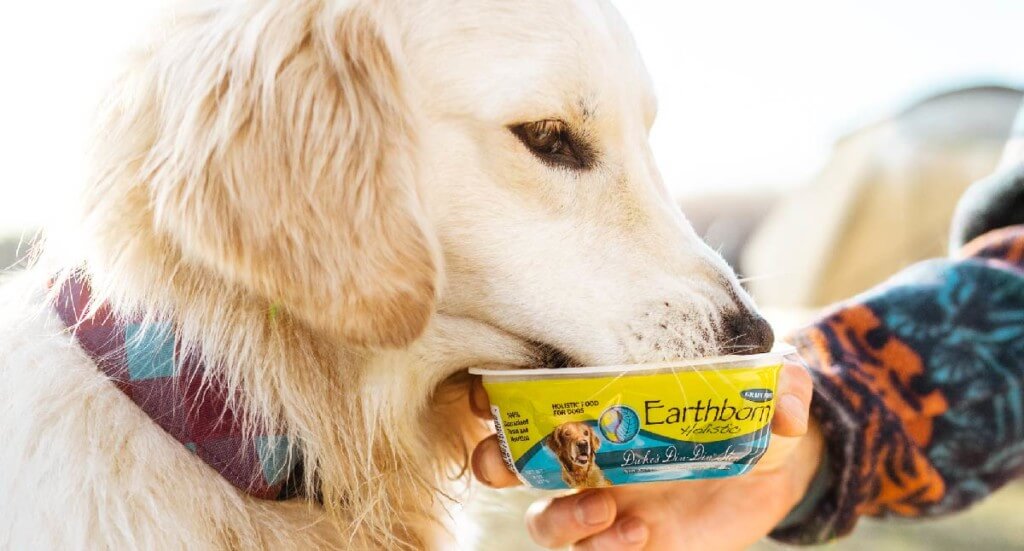
Adding Variety to Your Dog’s Weight Loss Food
With your dog’s weight loss program, providing a variety of food will keep their interest. Why is it important to eat a variety of foods? Your dog will thank you for giving them options instead of the same thing every day. Adding a balanced diet of kibble and a dog food topper will peak your dog’s interest and keep them wanting more. Low-calorie options with essential nutrients are great to look for so you can be sure to continue your dog’s weight loss.
Wet vs Dry Weight Loss Dog Food
When it comes to wet vs dry dog food and whether you should feed wet or dry dog food for weight loss, it all goes back to the fat content and dog food calories per cup. Whichever kind of food you decide to feed, make sure you’re looking at the guaranteed analysis to check how much fat is in the recipe and how many calories there are. In general, there tends to be fewer calories in wet dog food or soft dog food than in dog food kibble, but this depends on the recipe. For example, our Duke’s Din-Din recipe–another recipe we like to recommend to seniors for it’s low fat content–has 4% crude fat and only 209 kcal per cup. If you compare that to our K95 Duck canned dog food recipe mentioned earlier though, the K95 Duck recipe has 330 kcal per cup.
Another thing to consider when deciding between wet or dry dog food for weight loss is moisture content. Wet dog food naturally has more moisture than dry dog food (it’s even required on the guaranteed analysis!) and this leads to increased satiety and your dog feeling fuller for longer after eating. If your dog likes wet food, finding a low fat wet food recipe can be an easy way to cut calories.
If you want the benefits of both wet and dry dog food though, you can still have the best of both worlds by mixing. If you’re mixing dry and wet dog food, ratio is important to make sure your dog’s meal is still complete and balanced. Since the portions you should feed depend so much on your individual dog’s needs, it’s best to discuss with your vet how much of each type of food you should feed when mixing to make sure you’re not overfeeding–especially if weight loss is the goal.
How to Maintain the Ideal Weight for Your Dog
How to tell if your dog is a healthy weight? Check back in with the BCS chart mentioned earlier. While you should continue your vet checkups and discuss this with them, especially if your dog is on a weight loss plan, following the chart to get an idea of your dog’s body condition score is a great starting point to figure out if you’re on the right track.
Once you do get your dog to a healthy dog weight, it’s important to maintain that weight. While the food your dog eats is a large part of this, managing their diet as a whole is another important piece of the puzzle. For example, limiting treats and making sure you’re using controlled feeding times and not free feeding are other large factors. Free feeding doesn’t allow you to track how much your dog is actually eating and is counterintuitive to portion control, a main factor in weight loss. Make sure you pick feeding times and stick to them the best you can since this will also help with regulating metabolism.
With portion control, make sure you determine (with the help of your vet) how much food your dog should be eating and stick to that to help maintain your dog’s ideal body weight. Feeding charts are a great starting point, but many factors go into how much food your dog should actually eat–weight loss included–which is why your veterinarian will be able to give you a more specific amount to feed at dinner time and the right food serving sizes that will help your dog get to a healthy weight.
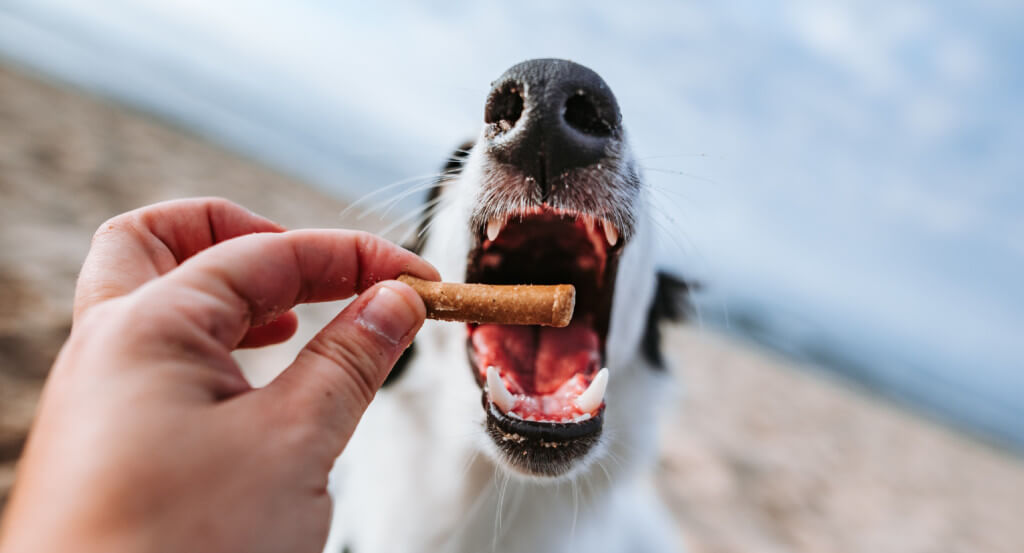
Another portion control tip–you’ll need to ditch the table scraps. Human foods high in calories can add up over time even if you’re giving your dog only a small taste every meal. Make sure you’re only feeding your dog their own food and avoid human foods at dinner time to help with weight loss.
Regular Exercise
Aside from a healthy diet, regular exercise is crucial when it comes to how to keep your dog healthy. Exercise can happen in many different forms; from a daily walk to swimming to a more structured agility session, there are all sorts of ways to keep your dog active to help support their healthy diet.
The easiest form of exercise you can partake in with your dog is a daily walk. A daily walk has many benefits ranging from socialization, mental stimulation, joint support, healthy sleep patterns, and overall good boy behavior. If a walk is a little too simple for you and your dog’s taste, spice things up by going for a jog or consider going on a hike at a dog-friendly trail in your area. This way you can see some sights and burn some calories at the same time!
Another easy form of exercise is scheduled playtime. Whether it’s a really good case of the zoomies or setting back time for a nightly game of tug-of-war, consistent playtime will help get your dog’s heart rate up without even leaving the house and spending quality time with your dog is a great way to continue building a relationship with them.
If you’re looking for more structured activities, dog sports are another form of exercise that could easily get your blood pumping, too. Agility, scent work, dock diving, and other dog sports are a great way to meet other dog parents while also helping your dog burn some extra calories and get essential mental stimulation in. If you’re looking to get involved in dog sports, AKC is a great resource for events and classes and figuring out where to begin to get your dog involved.
The AKC explains that finding the right sport is key to success and having a good time, so start by assessing your dog’s temperament to see which one might be best for you:
- “Think your dog is a perfect example of their breed? Try showing your purebred dog in Conformation.
- “Is your dog highly energetic? Do they enjoy running and responding to instruction? If so, Agility could be a great fit.
- “Has your dog mastered basic commands such as sit, stay and heel — and seems eager to learn more? Try Obedience.
- “Is your dog a scent sleuth? Can they find their food or toys by smell alone? Try AKC Scent Work.
- “Does your dog like doing obedience work in a low stress environment? Have you never competed before? AKC Rally is a great place to start.
- “Does your dog have an instinct to chase? Is he speedy? Try running the Coursing Ability Test or Fast CAT.
- “Will your dog follow a scent no matter where it may lead? Do they work well independently? Try Tracking.
- “Think your dog has a natural instinct for livestock? Herding is a sport for purebred dogs bred to herd, and the Farm Dog Certified Test is for all dogs.
- “Do you have a small Terrier or Dachshund? Have the vermin in your yard met their match? Earthdog tests might be for you. Barn Hunt taps into these instincts and is for all dogs.
- “Is your dog a sighthound? Lure Coursing may be just their speed.
- “Is your dog a Pointing Breed, Spaniel, Retriever or Hound? Explore the rich tradition of Field Events.
- “If you have a Coonhound, you know it. Does your dog run whenever given the chance? Are they an explorer? Do they have high bursts of energy, and then crash? Find a Coonhound event near you.”
Figure out what sport you think fits your dog’s personality and give it a shot! Your dog may surprise you!
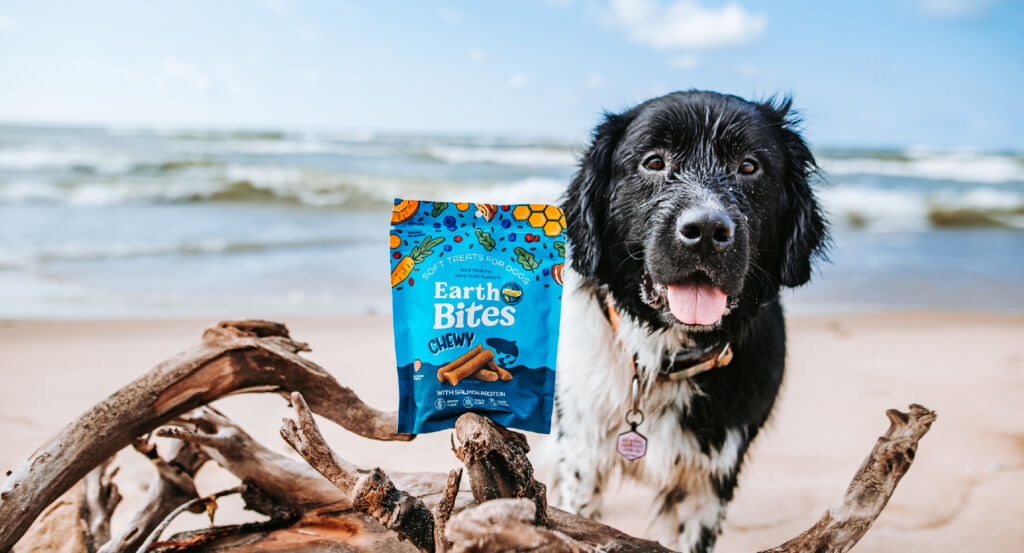
Encouraging Natural Behaviors to Help Your Dog Lose Weight
Teaching your dog healthy, natural behaviors is a great way to help them lose weight. Dog behavior training can be beneficial to cutting the pounds off of your dog. For example, a dog slow feeder bowl, such as this one from Neater Pets, can be used to help slow down your dog’s eating habits. Slower eating can help your dog feel more full quicker because it has time to digest as they are eating. An elevated slow feeder dog bowl is a bonus because it prevents the dog from choking if they tend to inhale their food quickly. Using interactive dog feeders or dog puzzle feeders is great mental stimulation for dogs and can help turn meal time into an exciting time for your dog.
What Rate of Weight Loss is Ideal for Dog
According to VCA Animal Hospitals, one to five pounds per month is a good weight loss plan for your dog. Using a dog weight loss calculator like this calorie calculator from Pet Nutrition Alliance is an option, but calculators like these are intended to be used as a starting point–you should always consult your dog’s veterinarian if you believe they require weight reduction. Rapid weight loss in dogs can also be unhealthy, so be sure to do research and request advice from your vet before placing your dog on a diet.
Safety Tips
If you think your dog may be overweight or obese and needs to be put on weight management dog food or a dog weight loss and exercise plan, make sure you schedule a vet visit first. Your vet will be able to help determine if your dog just needs a new food or to burn a few extra calories, or if there are underlying health conditions that are contributing to your dog’s weight. They’ll also help you come up with a weight loss plan that’s specific to your and your dog’s lifestyle to make sure there’s a greater chance of success.
As with humans, slow and steady wins the race. Long term weight loss is always ideal, so make sure you’re not putting your dog on any kind of crash diet in order to help them lose weight, as this is not healthy. Be sure to come up with a weight loss plan (longevity included) with the help of your vet that will be sustainable for both you and your dog in the long run. Dog weight loss causes a lot of changes in your dog’s body and metabolism, so changing things too quickly will most likely only hinder your progress.
Lastly, make sure you’re always leaving out fresh water for dogs. Keeping them hydrated is super important if you’re increasing their activity levels to help them lose weight, so be sure to keep an eye on their water bowls and refill often to keep them hydrated.
The most important tip? Stick to it! A dog’s weight loss journey can be similar to that of a human, so stay the course and don’t give up–soon your dog will be well on their way to living a long healthy life for years to come.


